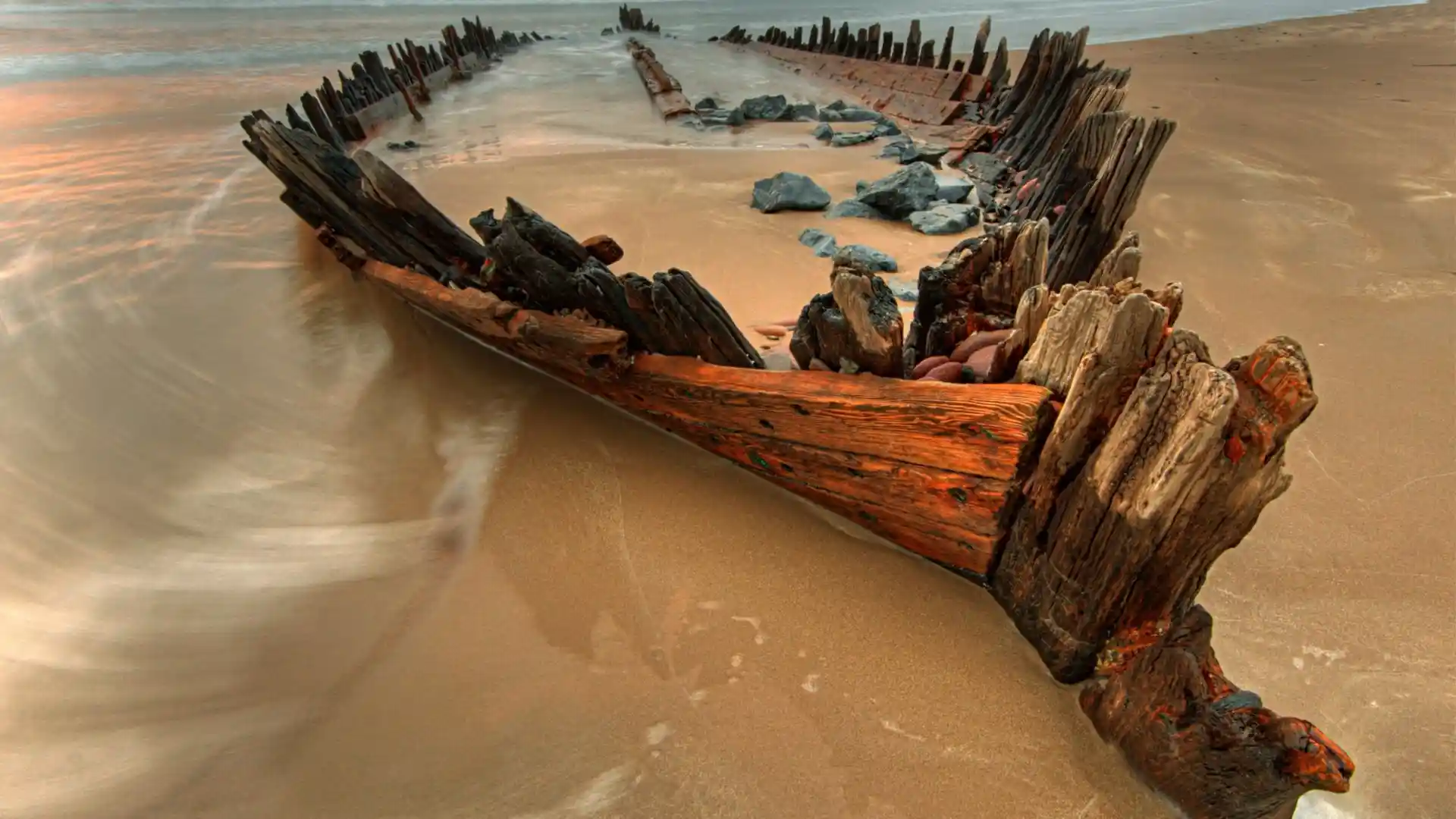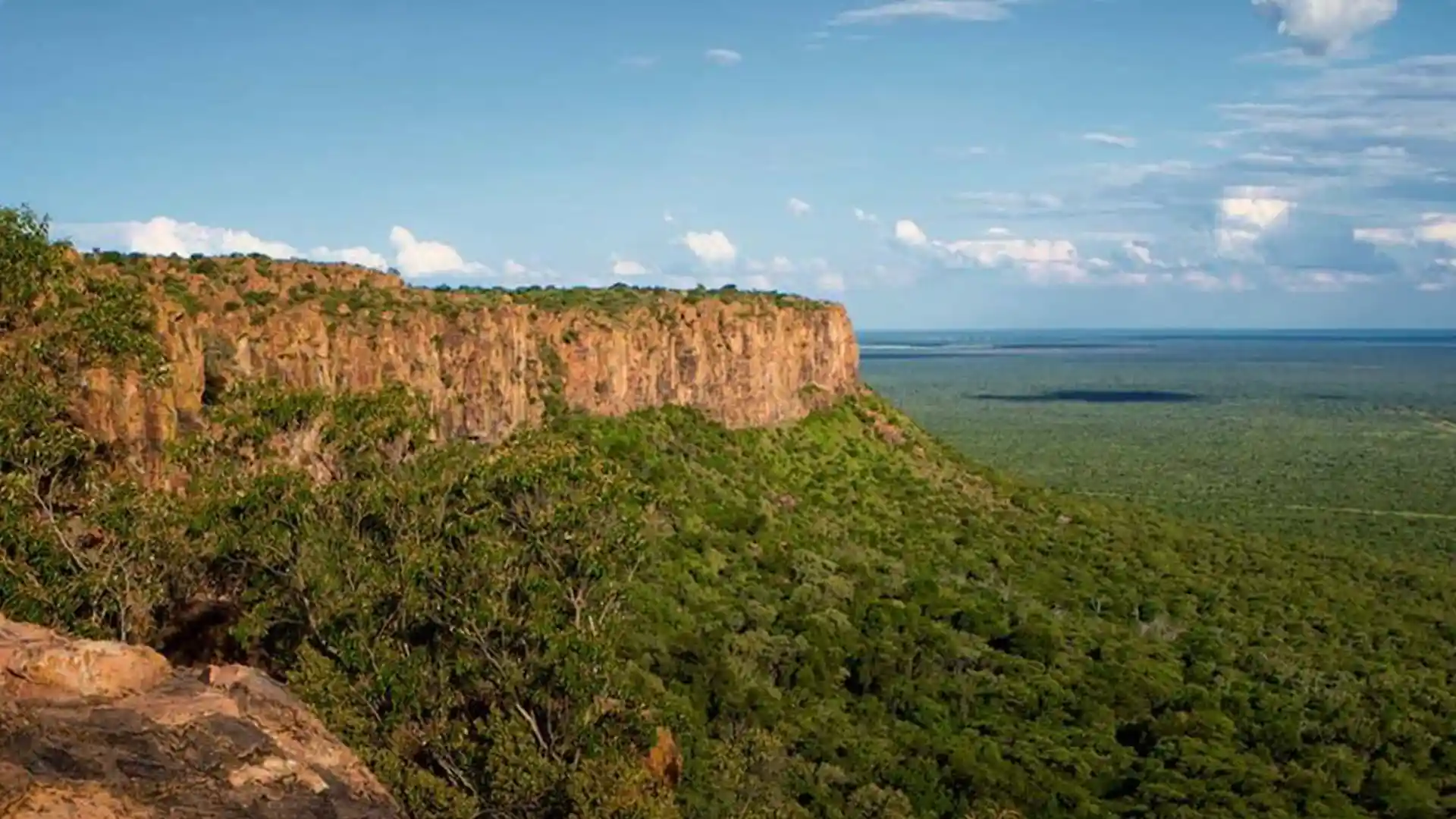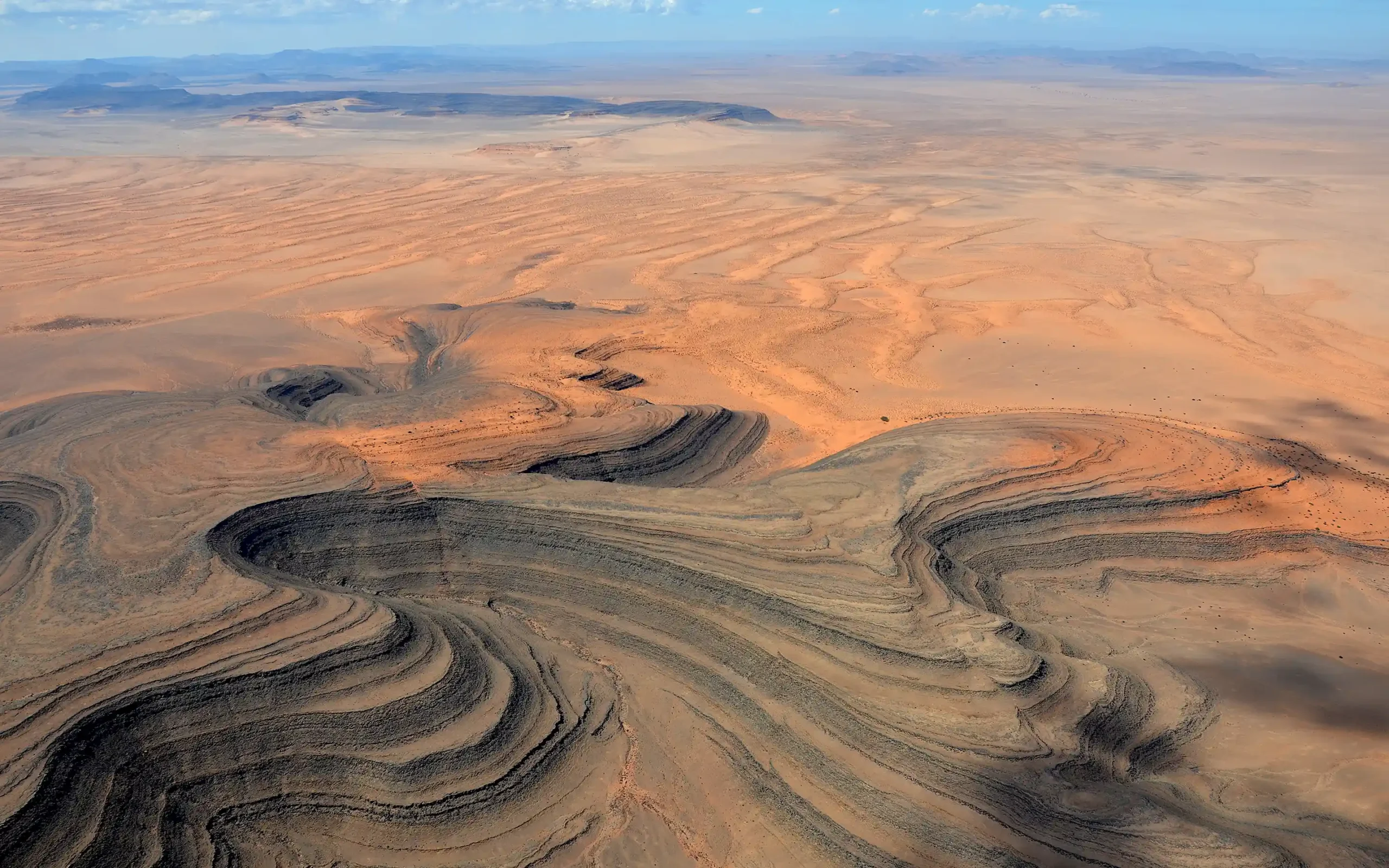Experience Breathtaking Namibia
Experience Breathtaking Namibia Namibia
About Namibia
Namibia, a striking country in southern Africa, is renowned for its dramatic landscapes, unique wildlife, and rich cultural heritage. From the towering sand dunes of Sossusvlei in the Namib Desert to the rugged beauty of the Skeleton Coast, Namibia offers a diverse array of natural wonders. The country is home to Etosha National Park, one of Africa’s premier wildlife destinations, where visitors can spot elephants, lions, rhinos, and an array of other species in their natural habitat. Namibia’s cultural tapestry is woven from diverse influences, including the traditions of the Himba, Herero, and San peoples, which can be experienced through village visits and cultural tours. Adventure seekers can enjoy activities such as sandboarding, quad biking, and hot air ballooning over the desert. The coastal town of Swakopmund offers a blend of German colonial architecture and adrenaline-pumping activities.
Namibia, located on the southwestern coast of Africa, has a history marked by indigenous cultures, colonial conquest, and a struggle for independence. Its diverse landscapes, from the Namib Desert to the Atlantic coastline, have shaped the experiences of its people and their rich cultural heritage.
The earliest inhabitants of Namibia were the San people, known for their hunter-gatherer lifestyle, which dates back thousands of years. The San were later joined by the Khoikhoi, pastoralists who brought new social structures and technologies. In the first millennium CE, Bantu-speaking groups such as the Herero and Owambo migrated into the region, introducing agriculture and ironworking.
European contact began in the late 15th century when Portuguese explorers, including Diogo Cão and Bartolomeu Dias, sailed along the Namibian coast. However, sustained European presence did not begin until the 19th century when traders, missionaries, and explorers from Germany and Britain arrived. In 1884, Namibia was declared a German protectorate, known as German South West Africa.
German colonial rule was characterized by the exploitation of natural resources and significant infrastructure development, but it also brought severe conflicts. The Herero and Nama peoples, resisting colonial encroachment on their land and way of life, staged a rebellion from 1904 to 1908. The German response was brutal, resulting in the deaths of tens of thousands of Herero and Nama in what is now recognized as one of the first genocides of the 20th century.
After Germany’s defeat in World War I, Namibia was placed under South African administration by the League of Nations. South Africa imposed its apartheid policies on Namibia, leading to widespread discrimination and land dispossession. The mid-20th century saw the rise of nationalist movements, with the South West Africa People’s Organization (SWAPO) leading the fight for independence. Armed struggle and international pressure intensified throughout the 1960s and 1970s.
Namibia’s path to independence was long and arduous. It wasn’t until 1988, following protracted negotiations and United Nations intervention, that South Africa agreed to end its occupation. Namibia officially gained independence on March 21, 1990, with SWAPO leader Sam Nujoma becoming the country’s first president.
In the years since independence, Namibia has made significant strides in nation-building, economic development, and social progress. The country’s democratic institutions have been strengthened, and efforts to address past injustices continue. Namibia’s economy is diverse, with significant contributions from mining, agriculture, and tourism. The country’s natural beauty, including Etosha National Park, the Skeleton Coast, and the Namib Desert, attracts visitors from around the world.
Geography
Namibia, located in southwestern Africa, is known for its dramatic landscapes, unique wildlife, and vast, unspoiled wilderness. Covering an area of approximately 825,615 square kilometers, Namibia shares borders with Angola and Zambia to the north, Botswana to the east, South Africa to the south, and the Atlantic Ocean to the west. The country is sparsely populated, making it an ideal destination for those seeking solitude and natural beauty.
One of Namibia’s most iconic geographical features is the Namib Desert, which runs along the entire western coast. The Namib is considered the oldest desert in the world and is famous for its towering sand dunes, particularly those in Sossusvlei and Deadvlei. These dunes, some of the highest in the world, create a surreal and breathtaking landscape. Inland from the Namib Desert lies the Great Escarpment, which forms a transition zone to the central plateau. This plateau, which includes the capital city of Windhoek, is characterized by rolling hills, savannahs, and scattered mountain ranges.
To the northeast, the Caprivi Strip, a narrow protrusion of land, contrasts with the arid regions, offering lush riverine landscapes and diverse wildlife due to the presence of the Okavango, Zambezi, and Kwando rivers. The Etosha Pan, located in the north-central part of the country, is a large salt pan surrounded by grasslands and savannahs, forming the heart of Etosha National Park. This park is one of Africa’s premier wildlife destinations, home to a rich variety of animals including elephants, lions, and rhinos. The Kalahari Desert, extending into eastern Namibia, features red sand dunes and fossil watercourses, supporting unique flora and fauna adapted to arid conditions.
Climate
Namibia’s climate is predominantly arid, with variations influenced by its diverse geography. The country experiences hot, dry conditions for most of the year, with significant differences between the coastal, desert, and inland regions. Namibia has two primary seasons: the wet season from November to April and the dry season from May to October.
The coastal region, influenced by the cold Benguela Current, has a desert climate with mild temperatures and very low humidity. Daytime temperatures range from 15°C to 25°C (59°F to 77°F) year-round, but the coast is often shrouded in dense fog, especially in the mornings. This fog is a crucial source of moisture for the unique desert ecosystems. The Namib Desert inland from the coast experiences more extreme temperatures, with summer highs often exceeding 40°C (104°F) and cooler winter nights that can drop below freezing.
The central plateau, including Windhoek, has a semi-arid climate with more distinct seasonal variations. Summer temperatures range from 20°C to 35°C (68°F to 95°F), while winter temperatures can drop to between 0°C and 20°C (32°F to 68°F). The plateau receives more rainfall than the coastal areas, particularly during the wet season, which brings brief but intense thunderstorms. The wet season is vital for replenishing water sources and supporting agriculture and wildlife.
The northeastern region, including the Caprivi Strip, has a subtropical climate with higher rainfall and more humid conditions compared to the rest of the country. This area receives the majority of its rainfall from December to March, with temperatures ranging from 25°C to 35°C (77°F to 95°F) during the wet season. The dry season is cooler and less humid, making it an ideal time for wildlife viewing.
Experience the rich linguistic diversity of Namibia, where the spoken word weaves a vibrant narrative that reflects the cultural mosaic of this Southern African nation. With a rich linguistic heritage, Namibia boasts a variety of languages that add a unique layer to your travel encounter.
As you journey through Namibia, one encounters a linguistic symphony that resonates with the diversity of its people. English, as the official language, serves as a bridge of communication, welcoming travelers to engage with the warmth of Namibian hospitality. Dive into the melodic tones of Oshiwambo, one of the prominent languages spoken in the northern regions, and become enveloped in the expressive cadence of Damara, echoing through the central landscapes.
In the heart of the country, Herero unfolds as a cultural treasure, preserving the traditions of the indigenous communities. In the southern regions, Nama, with its distinctive clicks, adds a fascinating dimension to Namibia’s linguistic landscape, creating an auditory journey into the traditions of the local communities.
The experience continues as you explore the eastern regions, where Afrikaans, a legacy of Namibia’s colonial history, interweaves with the local languages. Its presence reflects the cultural fusion that shapes Namibia’s linguistic identity, creating a harmonious blend of heritage and history.
Namibia’s linguistic journey culminates with the timeless voices of the San people, whose indigenous languages resonate with ancient wisdom and a deep connection to the land. This linguistic safari through Namibia invites you to not only hear the words spoken but also to feel the pulse of a nation through its diverse languages.
Navigating the expansive beauty of Namibia is a journey etched by the vastness of its landscapes, primarily undertaken by land rather than air. The country’s arteries, both primary and secondary, weave a tapestry of tarred and well-graded gravel routes, ensuring access to major tourist destinations without the imperative of an all-wheel-drive vehicle, except for the rugged terrains of Kaokoland and the mysterious Skeleton Coast.
As the sun sets, caution takes the wheel, for nighttime travel in Namibia unveils a perilous dance with wildlife on the roads. Driving on the left side, travelers traverse roads that have a voracious appetite for tires and a penchant for chipping windscreens. Regular tire checks and vigilant inspections become a travel ritual, ensuring a safe sojourn through Namibia’s diverse terrains.
The gravel roads of Namibia unfold as a symphony of challenges and rewards. When overtaken on these rugged paths, a savvy traveler drives as far left as possible, slowing down to dodge the onslaught of flying stones. Soft road edges add a layer of caution, reminding explorers to tread carefully through the untouched wilderness.
In the expansive canvas of Namibia, service stations, like oases, may be scattered, prompting the wise traveler to consult a map for strategic refueling. Venturing off the beaten path requires a keen eye for these fueling waypoints, ensuring that the tank is consistently topped off. While most town-based stations embrace modern conveniences like credit card acceptance and ATMs, the countryside whispers a different tune, often requiring the jingle of cash.
Explore the practical journey through Namibia. As you traverse this captivating African destination, the Namibian Dollar (NAD) takes center stage, providing a seamless financial backdrop to your exploration. Linked at a 1:1 exchange rate with the South African Rand (ZAR), these currencies offer a unique duality, allowing flexibility and convenience as you navigate the vibrant landscapes and cultural markets of Namibia.
Let’s delve into the currency landscape that shapes your journey:
Namibian Dollar (NAD): As the official currency, the Namibian Dollar plays a pivotal role in your transactions, offering a straightforward and standardized unit of exchange throughout the country.
South African Rand (ZAR): Coexisting with the Namibian Dollar, the South African Rand provides a versatile currency option, enriching your travel experience with dual monetary possibilities.
Cash Transactions: In the rhythm of local markets and remote areas, cash remains king. ATMs in urban centers ensure accessibility, while having some cash on hand facilitates seamless transactions in various settings.
Credit Cards: Towns and tourist hubs embrace credit cards, offering a convenient means for exploring local experiences. Ensure your cards are set for international transactions before exploring the vibrant landscapes of Namibia.
Currency Flexibility: The coexistence of the Namibian Dollar and South African Rand provides you with practical options, allowing you to adapt seamlessly to different payment preferences in diverse settings.
Local Economy: Carrying some cash aligns with the pulse of the local economy, particularly when exploring markets or venturing into remote areas. It becomes a tactile connection to the vibrant economic landscape of Namibia.
As you explore your Namibian journey, let the currency be a reliable companion, enriching your exploration of this captivating land and facilitating a seamless integration into the cultural and economic tapestry of this African gem.
Unveiling Namibia's Beauty
General Knowledge Base
General information about Namibia.
Etosha National Park is Namibia’s largest national park and is home to a wide range of wildlife, including elephants, lions, and rhinos.
The name “Namibia” comes from the Namib Desert, which is the world’s oldest desert and covers much of the country.
The Himba people are a semi-nomadic tribe that has lived in Namibia for centuries. Their unique customs and traditions, such as covering their skin with a mixture of butterfat and ochre, have made them a popular tourist attraction.
The Skeleton Coast is a rugged, barren stretch of coastline in Namibia that is known for its shipwrecks, seal colonies, and eerie beauty.
The Fish River Canyon is one of the largest canyons in the world and is a popular hiking destination.
The highest peak in Namibia is Brandberg Mountain, which rises to a height of 2,573 meters.
The Spitzkoppe Mountains are a group of granite peaks that are over 120 million years old and are a popular destination for rock climbers.
The NamibRand Nature Reserve is a private reserve that is home to a wide range of wildlife, including cheetahs, leopards, and giraffes. It is also one of the best places in the world to stargaze, with clear skies and minimal light pollution.



